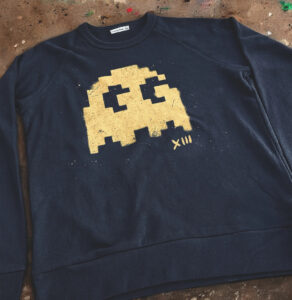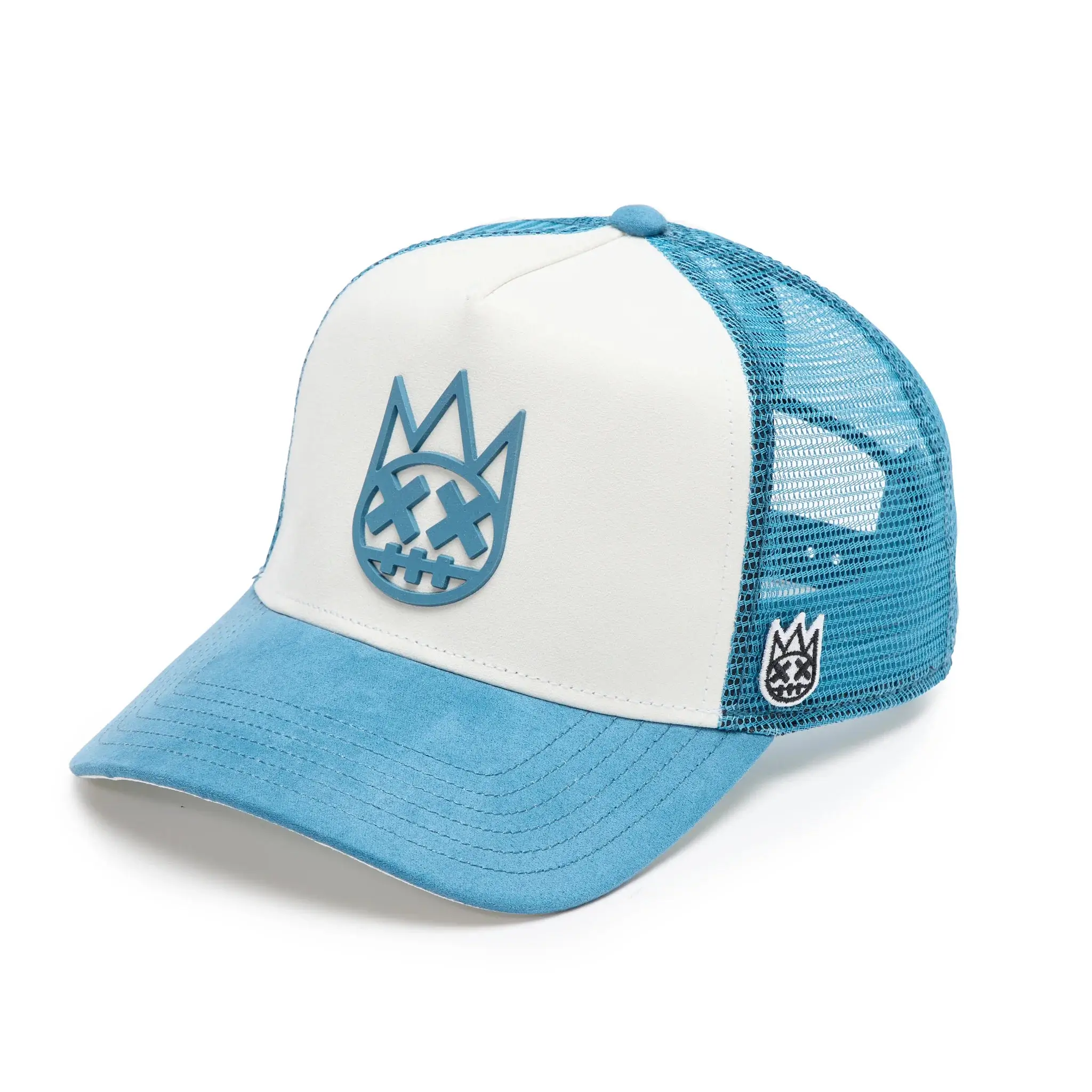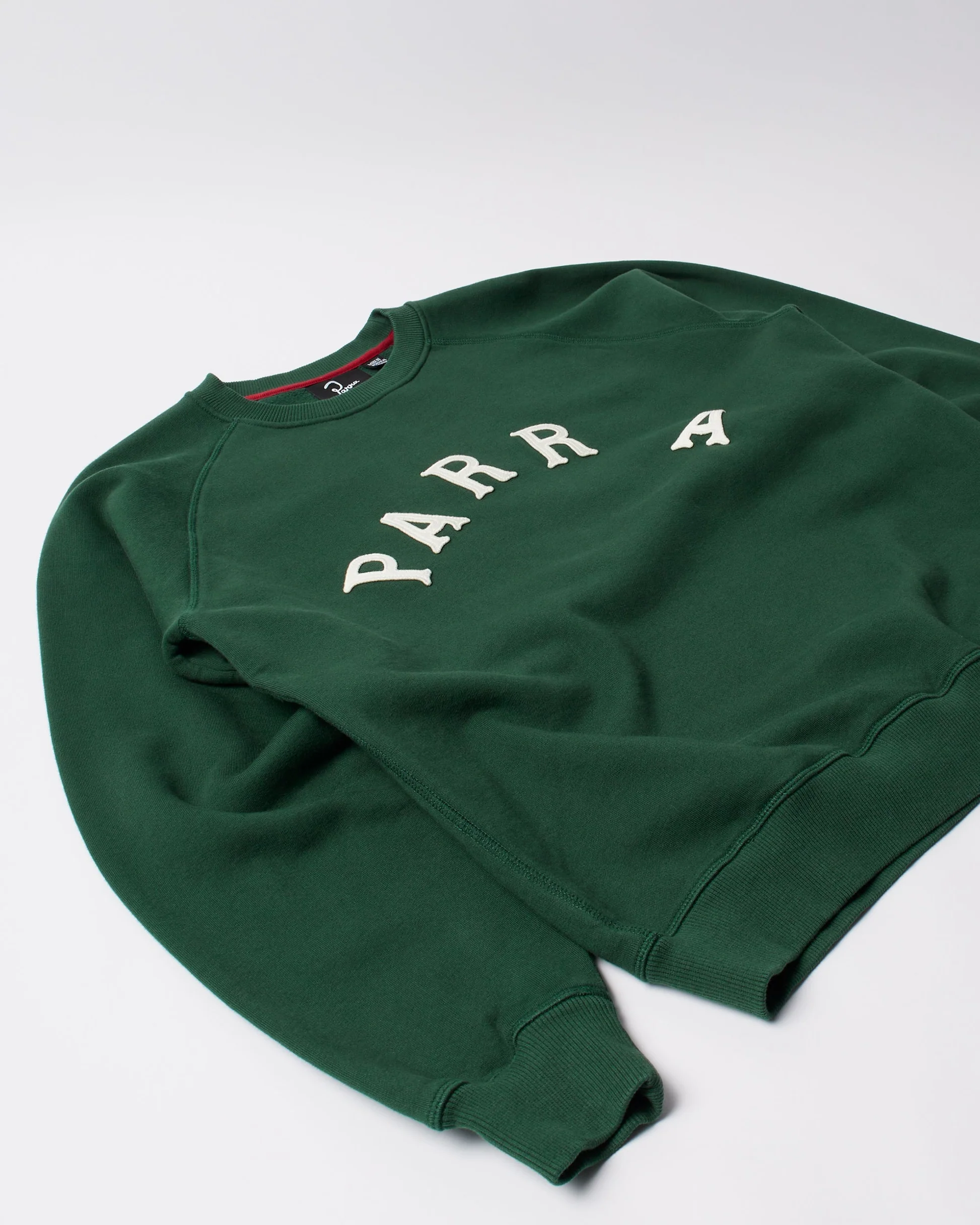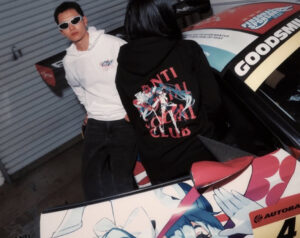The desert doesn’t forget. Not the heat. Not the shimmer. Not the way silence holds its breath before swallowing something whole.
On the outskirts of Sun City—where ghost towns lean into ruin and the sky cracks open like an old vinyl jacket—French Terry Crew made an appearance that wasn’t supposed to exist. A whisper of a drop, a pop-up that never got promoted, a non-event with more impression than most full-scale launches. No RSVP. No photos. No postmortem press release. Just one phrase scribbled in chalk outside a blown-out storefront: “French Terry Crew – One Night Only.”
That was it.
If you were there, you weren’t supposed to be. If you weren’t, you won’t find it online.
The whole thing felt like a haunting. And maybe that’s the point.
The Material Haunt
French Terry Crew isn’t a designer, not exactly. Not a label either, at least not one that plays by the rules. Think less “brand” and more apparition. A collective? Maybe. A mood? Definitely. Their identity is stitched into anonymity. Every piece they put out is untagged. No logos. No sizing. No press kits. Just French terry cloth fabric—loopback fabric, unfinished edges, brutalist tailoring—and the occasional blood-red hand stitch near the hem. Like a wound. Like a memory.
At Sun City Rags, the pieces hung from bent rebar jutting out of cracked adobe walls. One rack held what looked like sun-bleached utility uniforms, each one altered beyond recognition—drawstring closures replaced by woven wire, seams undone and redone with what looked like dental floss. Another rack was draped in inverted hoodies, some charred at the cuffs, others stiff with resin. A pile of half-destroyed crewnecks sat in the middle of the floor like a sacrificial offering.
It wasn’t fashion. It was aftermath.
Ghost Culture
Sun City Rags isn’t a venue. It’s a place that used to be a place. An old textile mill from the mid-century that was repurposed as a thrift graveyard in the 90s, and now exists as a sort of open-air museum for the post-industrial collapse. French Terry Crew picked it for a reason. Everything there is either rusting, molding, or burning slowly in the sun.
No runway. No models. The pieces wore themselves. Or maybe the space wore them. And the attendees—what few there were—stood around like spectators at a séance. One guy in a shredded business suit whispered that he drove eight hours after hearing a rumor on a Discord server. Another woman said she was trying to find the place for three days. Nobody knew who organized it. No one would admit to being part of the Crew.
The atmosphere was unnerving. Not cool. Not curated. Real. Raw. On edge. Like the drop could vanish mid-browse. And maybe it did. Some pieces were gone before anyone saw them. One crewneck with rusted safety pins across the shoulders reportedly vanished while someone was taking a picture. Like a trick of the light. Or a dare.
Statement, Not Style
There’s no doubt French Terry Crew is making a statement. But they’re not spelling it out. Every garment feels like a relic of resistance. To overbranding. To trend-chasing. To fast fashion and the “drops” that function more like dopamine hits than design showcases. F.T.C. throws all that out. Literally. They don’t sell anything. No prices. No QR codes. If you want something, you leave something in its place. A barter system. A ritual. You trade a memory for a moment.
One guy gave up his high school letterman jacket. A woman traded a faded photo album. Someone else left a wad of handwritten poetry bound in string.
It’s not commerce. It’s communion.
Fashion as Ghost Story
French Terry Crew isn’t trying to lead a movement. They’re the movement you realize you missed when you look back and wonder when everything shifted. Their clothes aren’t designed to wear well; they’re designed to survive something. Each piece feels post-apocalyptic, but not dystopian. There’s a beauty in the breakdown—a quiet elegance in the idea that we’re all just wearing stories that can’t be told anymore.
At Sun City Rags, that philosophy materialized like a mirage. The garments weren’t “new” in any way that word still means anything. But they weren’t retro either. They were displaced. Time-scattered. Burnt at the ends. Frayed into relevance. They didn’t belong, which made them belong more fiercely.
Ghosted? Maybe. But not forgotten.
Aftermath
When the sun came up the next morning, there was nothing left at Sun City Rags. No chalk. No fabric. No pins. Just a smear of ash and two stray threads caught in a rusted hinge. No one admitted to taking them. No one admitted to leaving them.
French Terry Crew wasn’t there. Or maybe they were, in every choice made, in every garment that now lives in someone else’s life. They leave no evidence. No signature. Just questions:
What are we really wearing?
Who made it—and at what cost?
How much memory can fabric hold?
Sun City Rags didn’t host an event. It hosted an encounter. The kind that echoes long after you think you’ve left it behind.
And French Terry Crew?
They didn’t drop a line.
They raised a ghost.
No comments yet.









